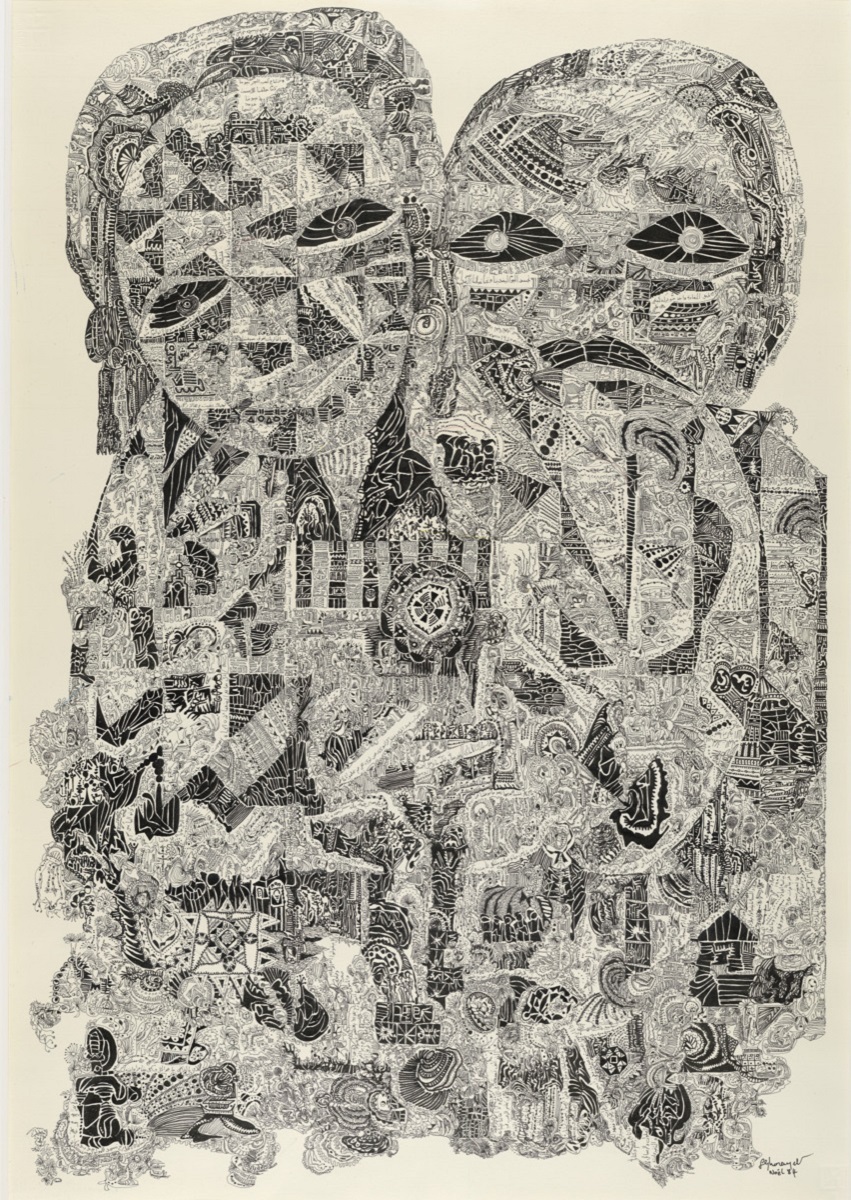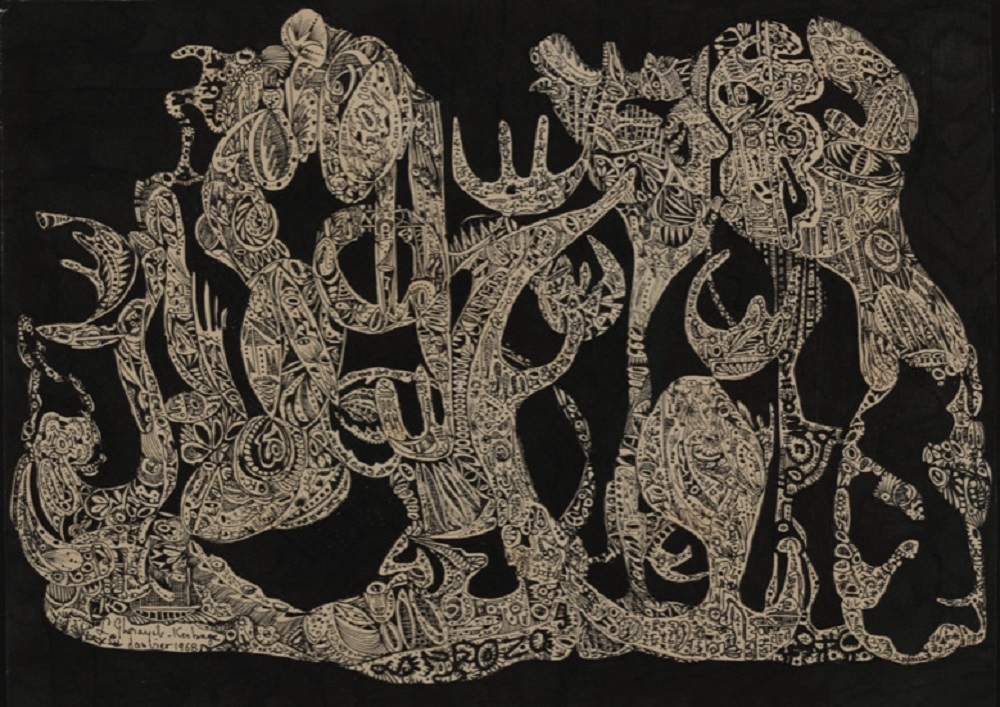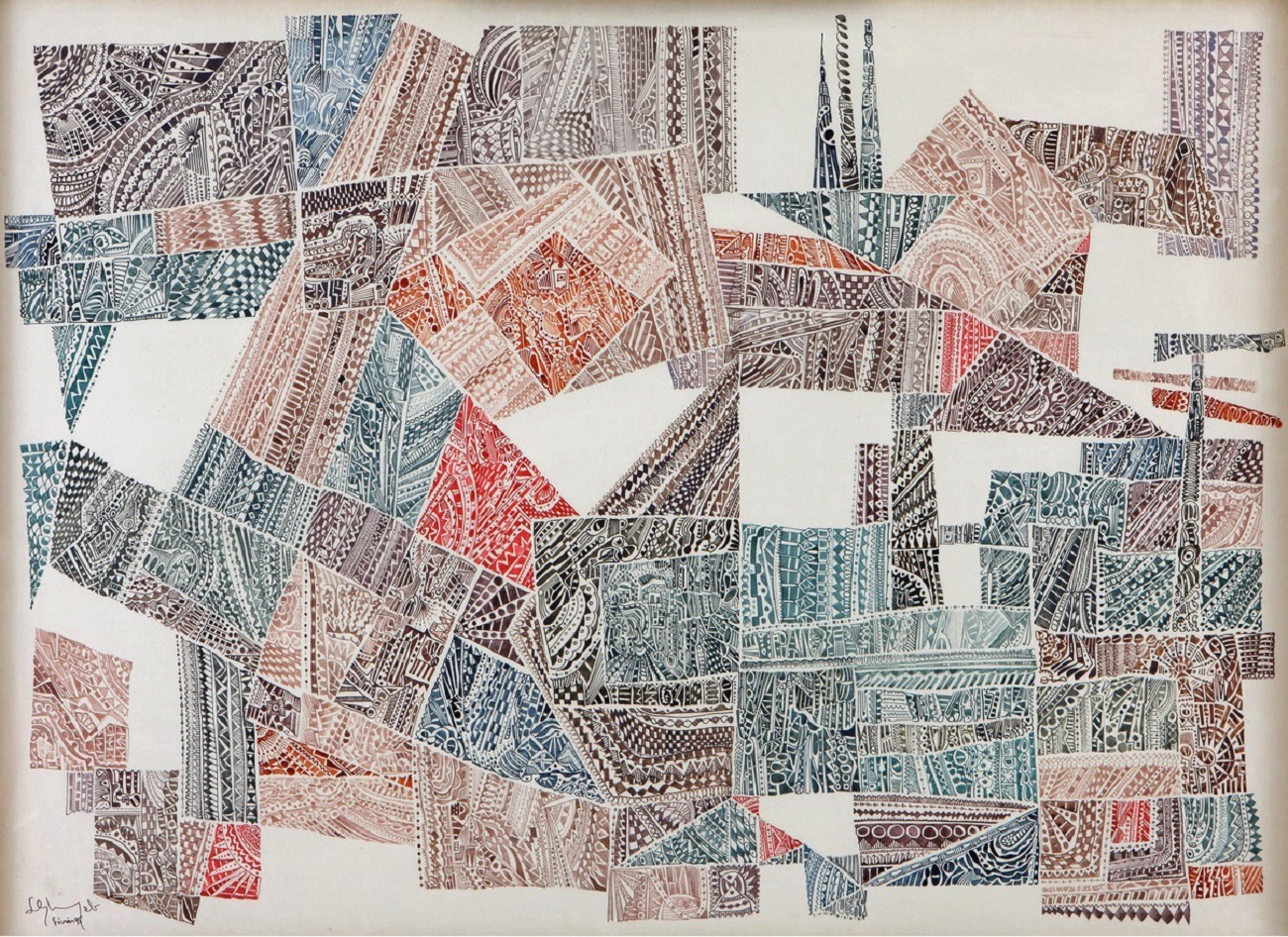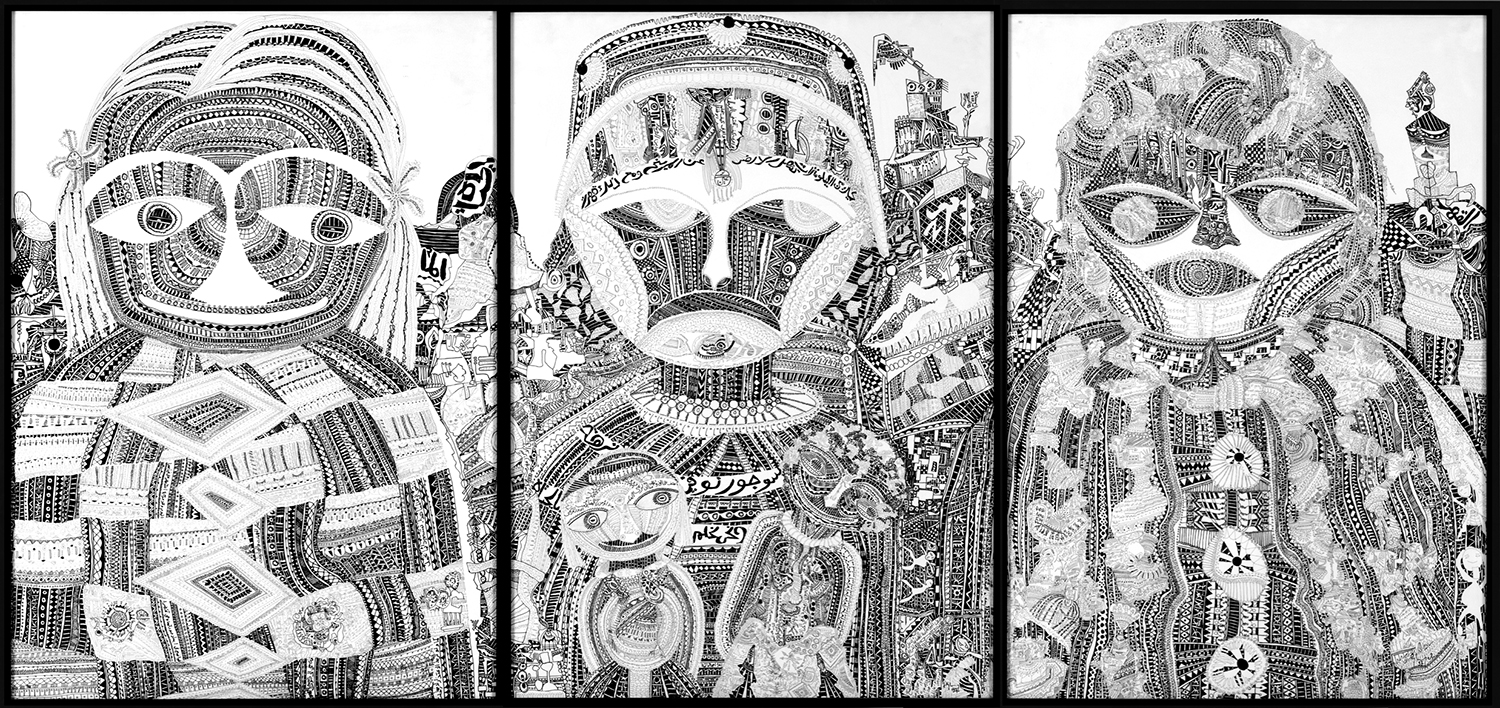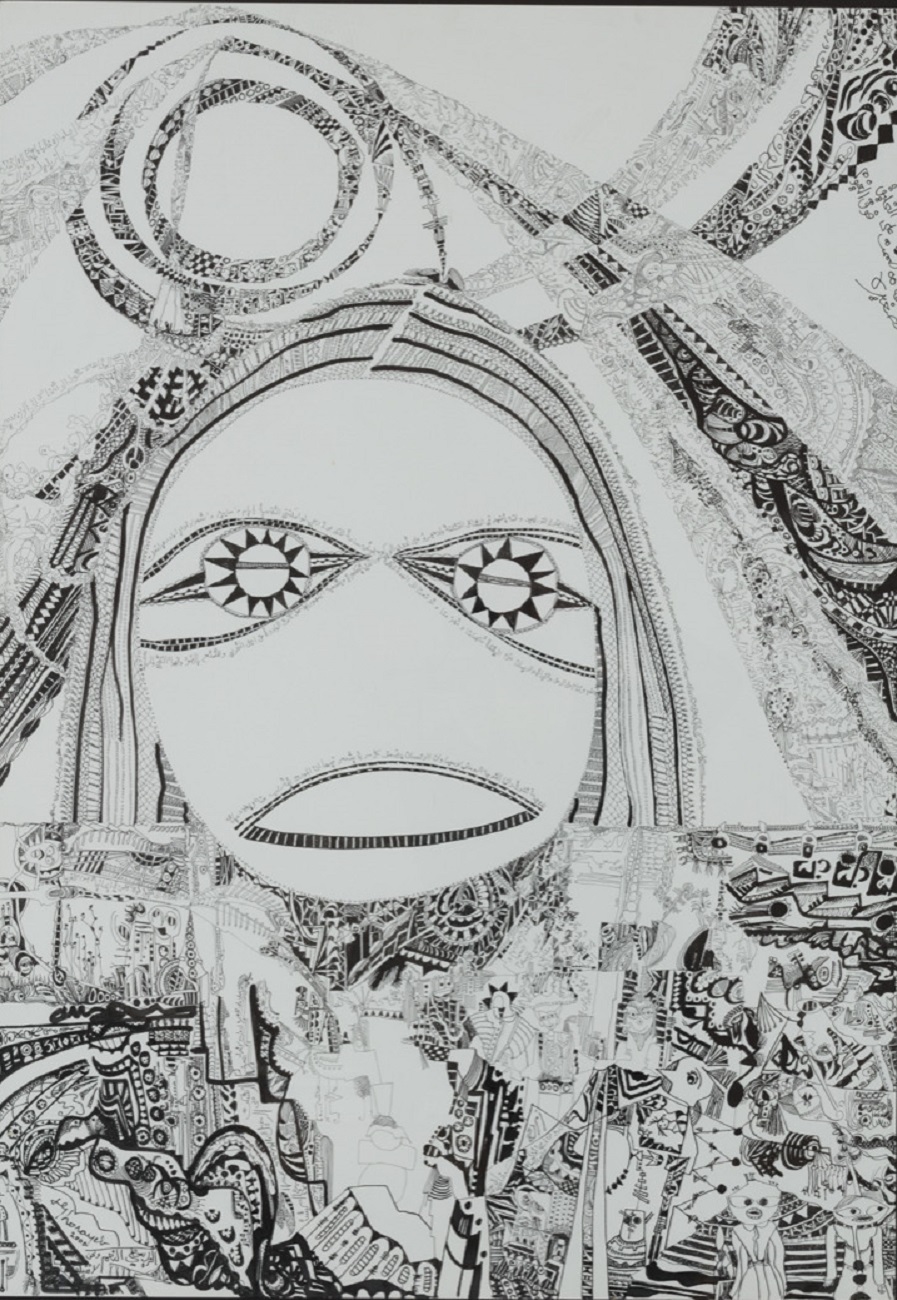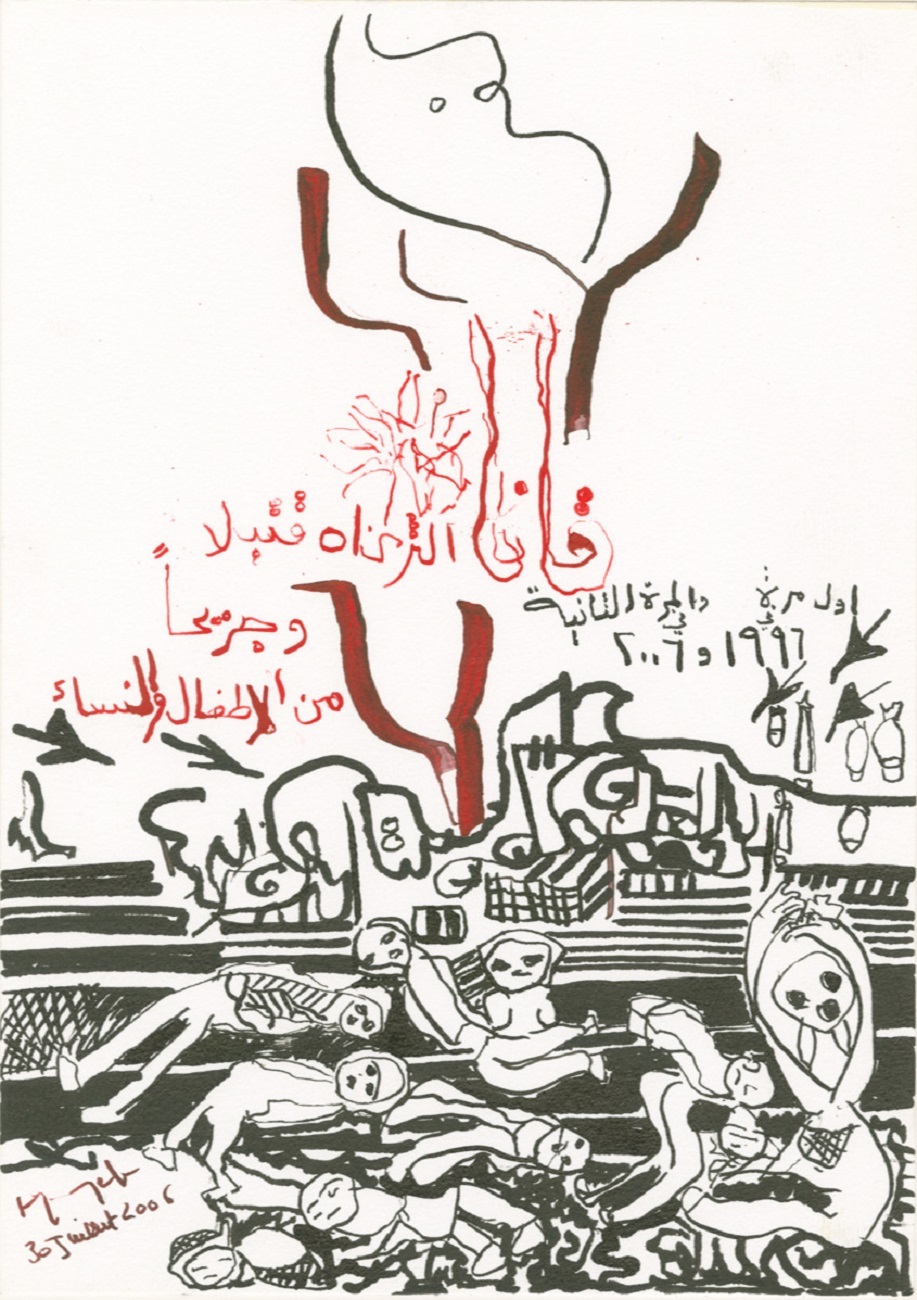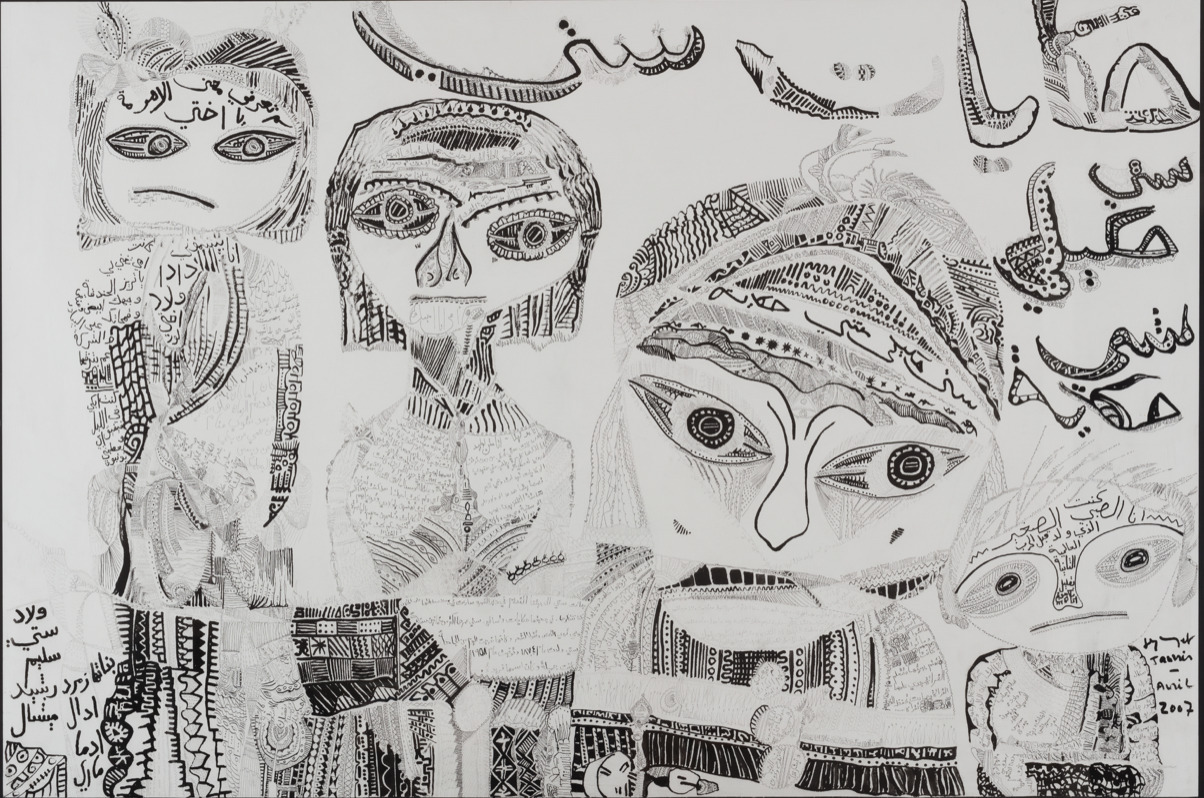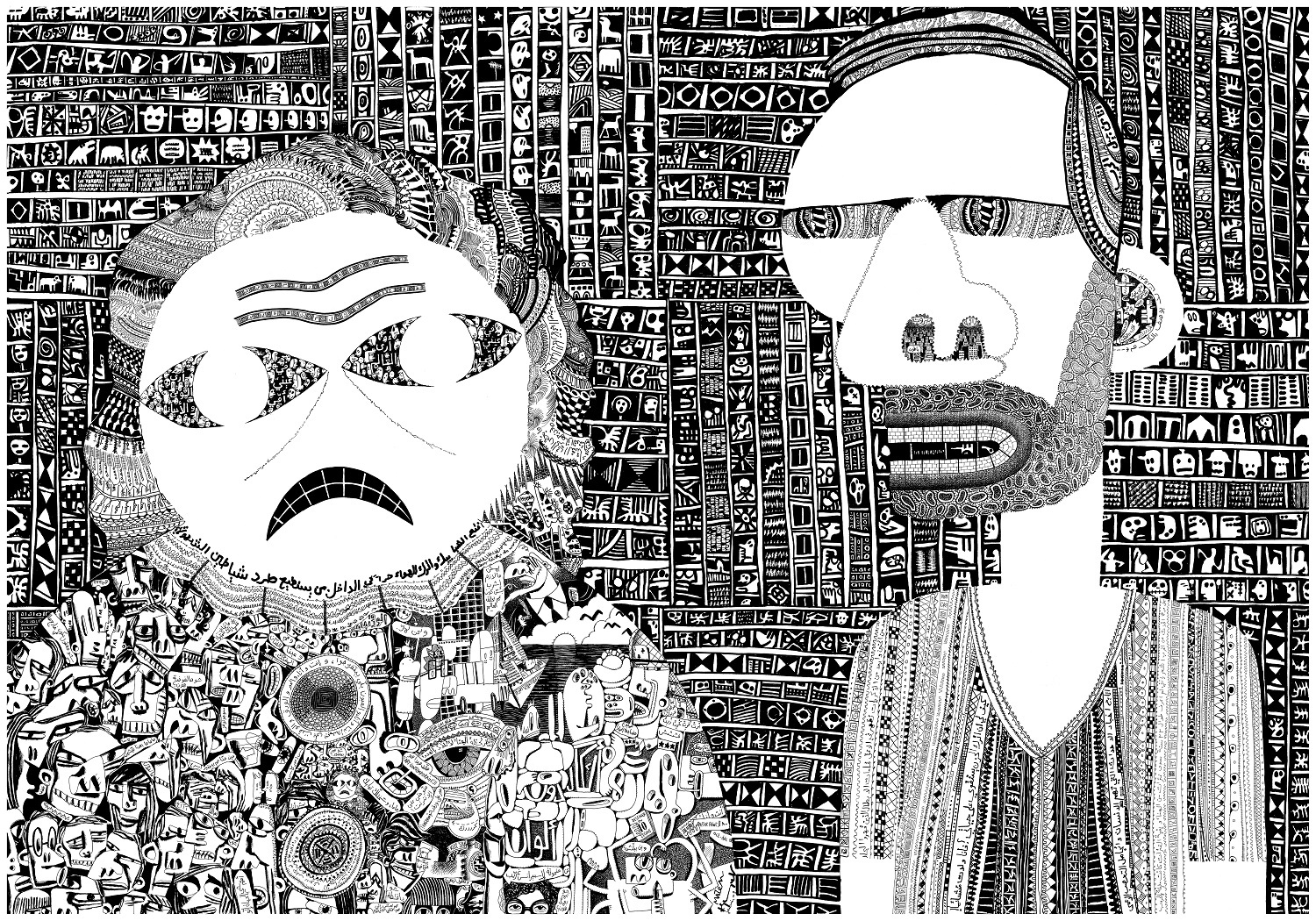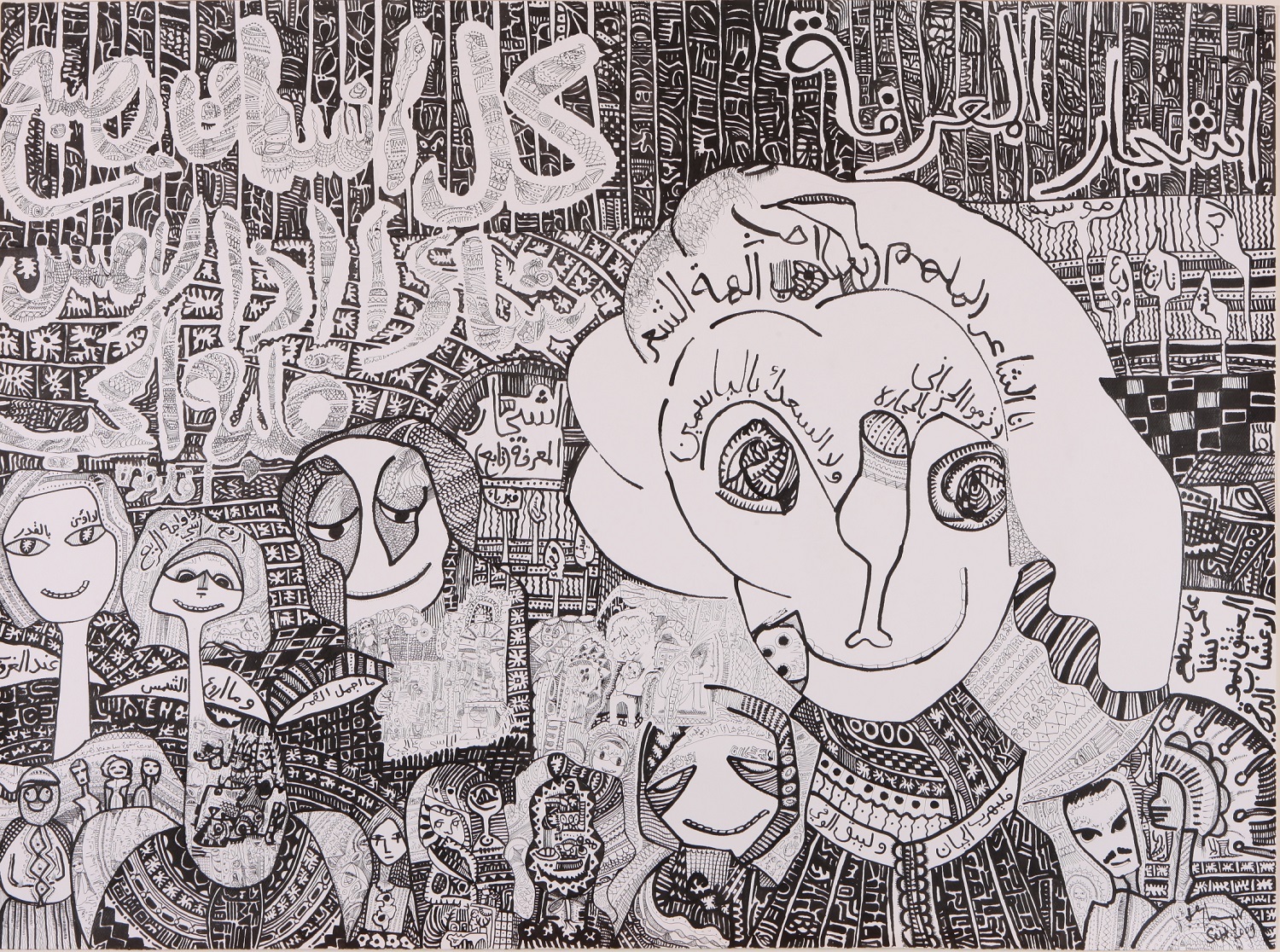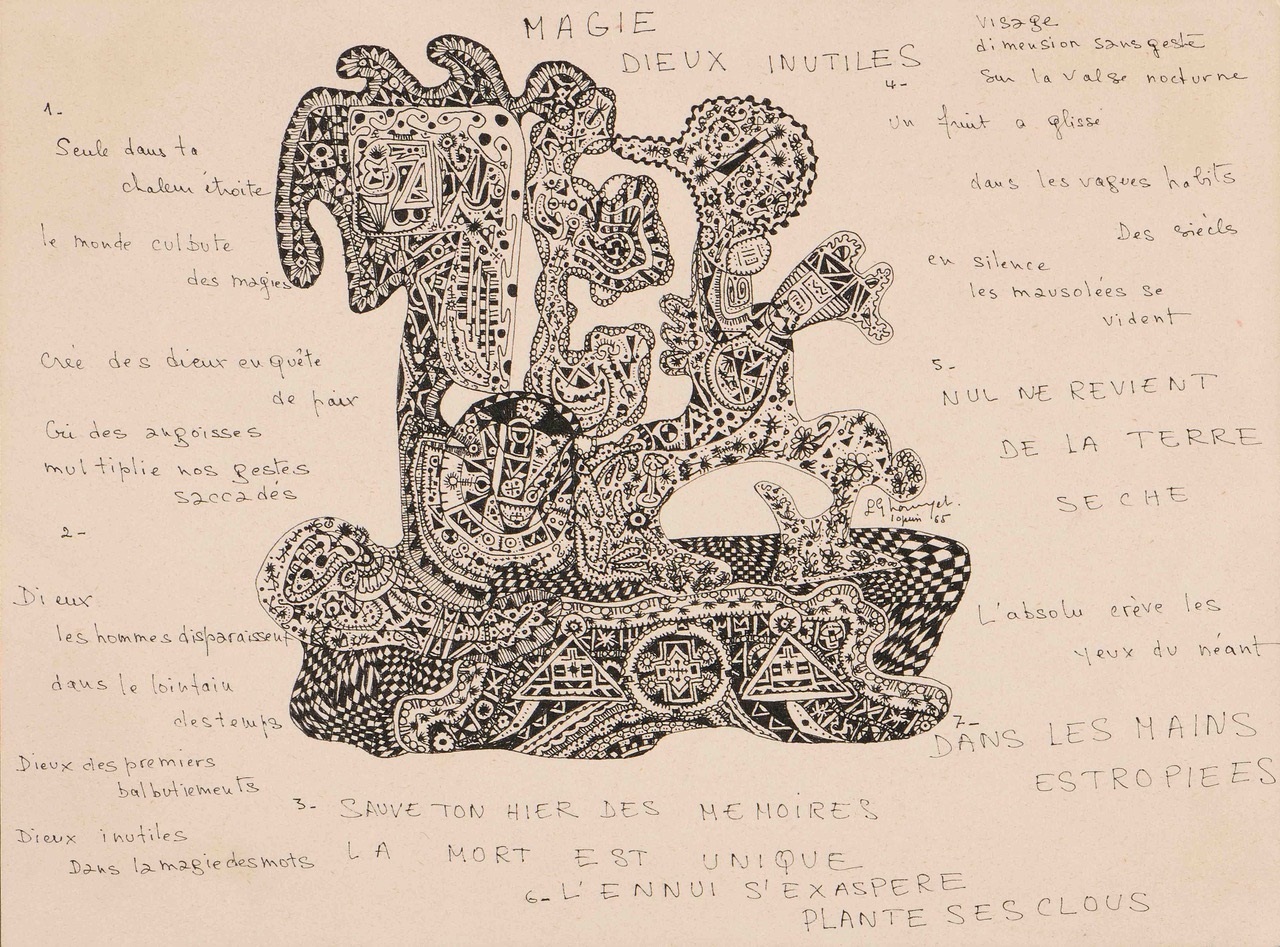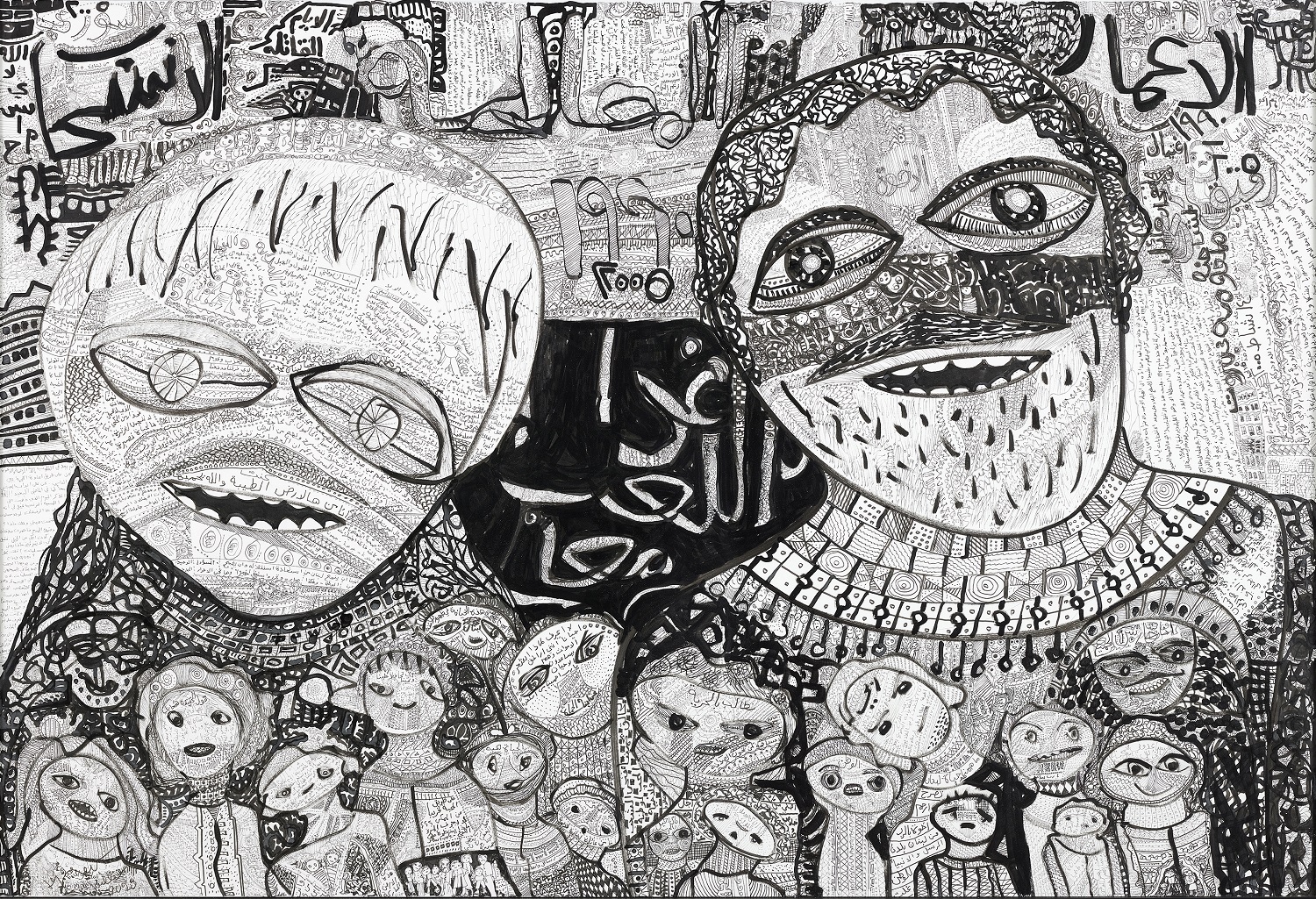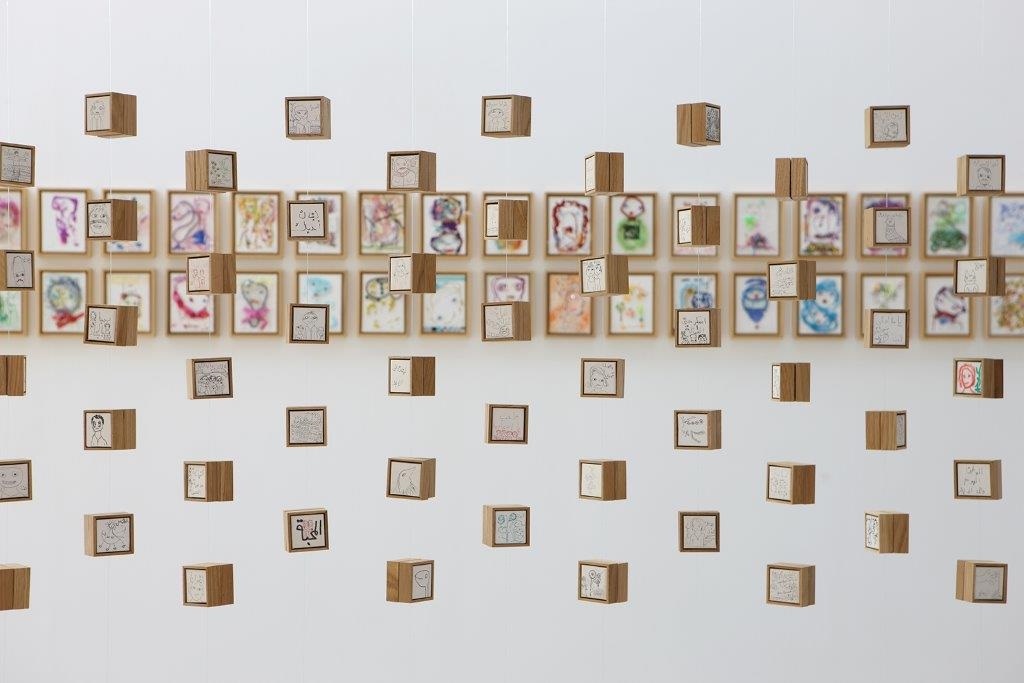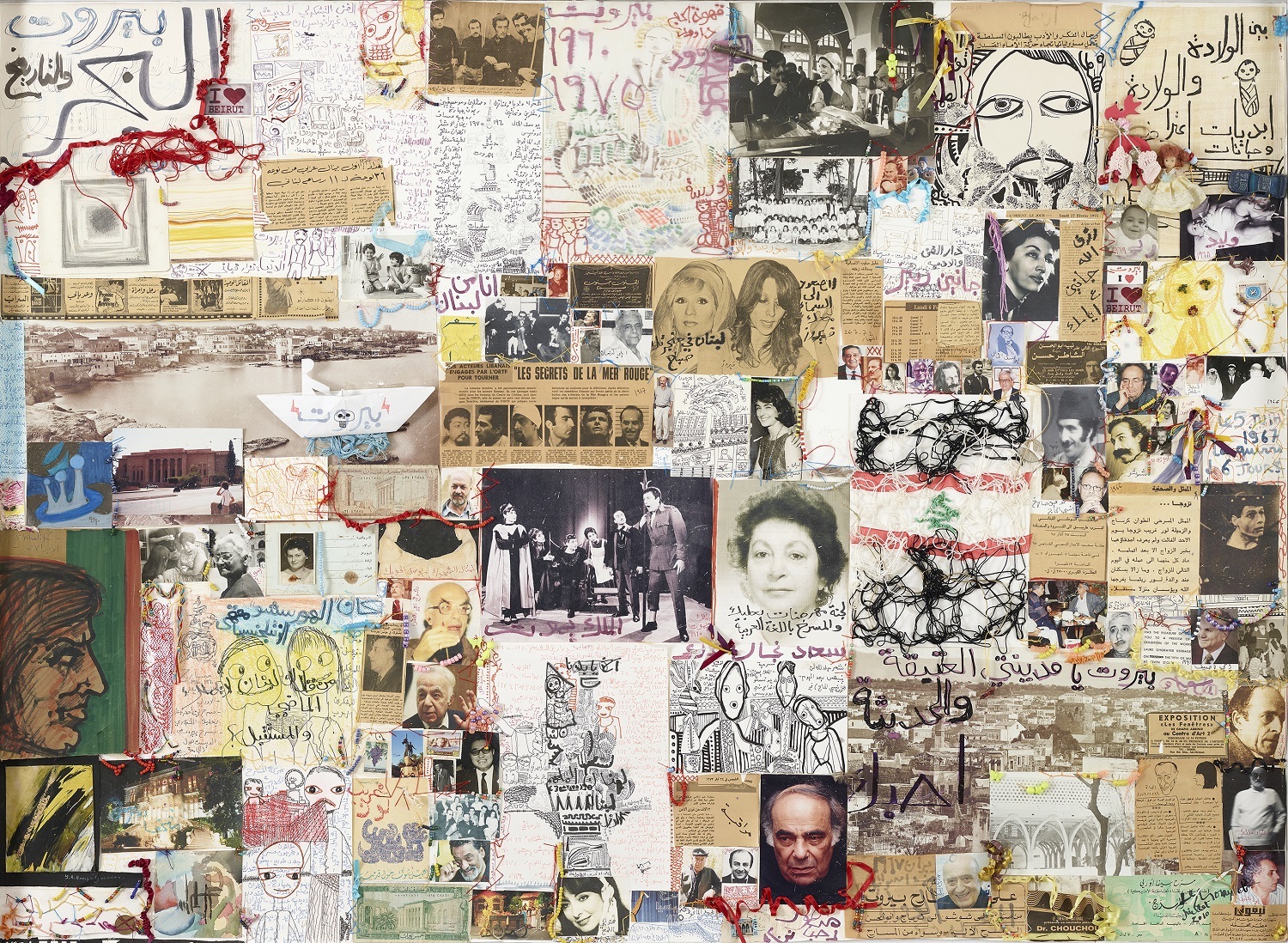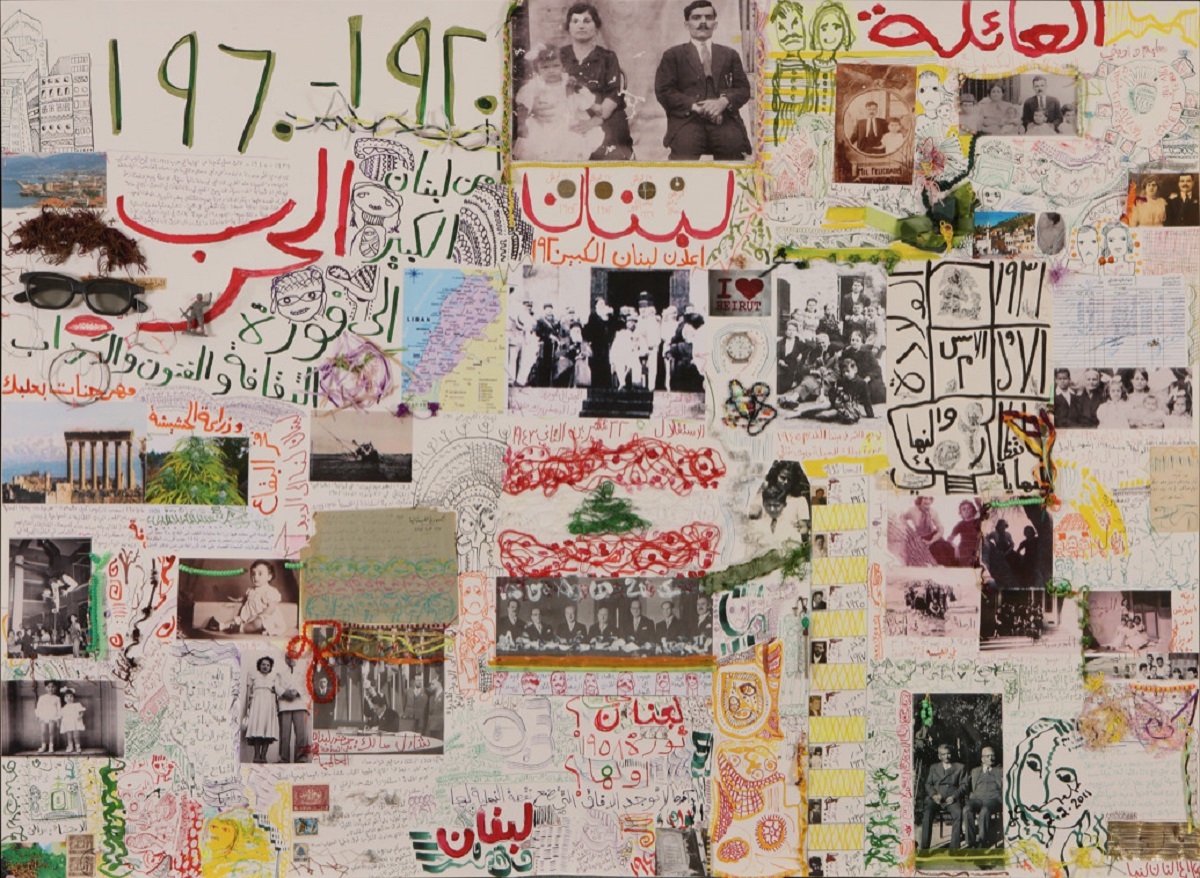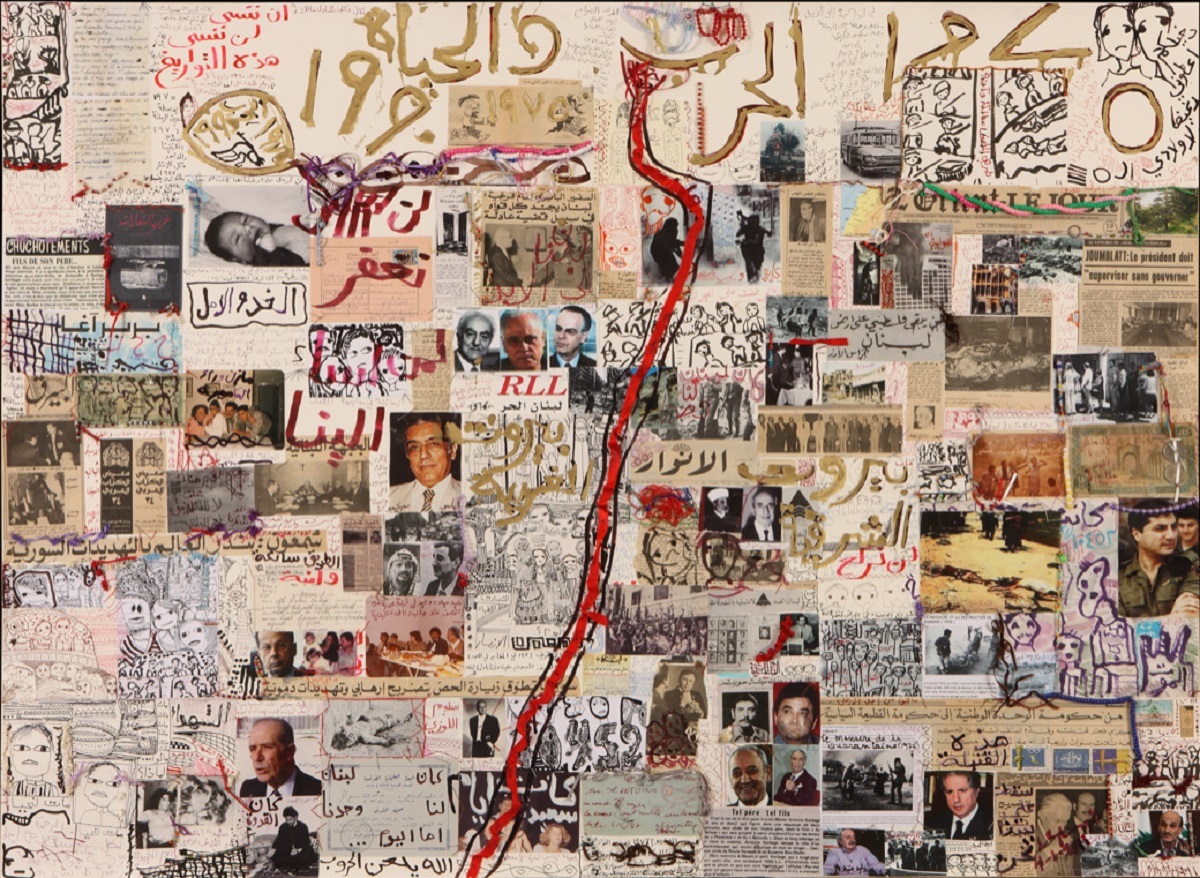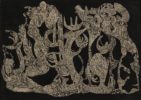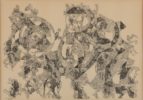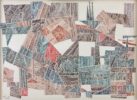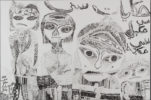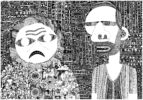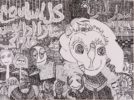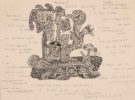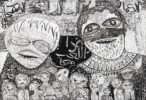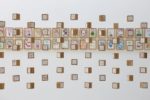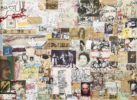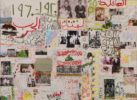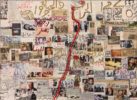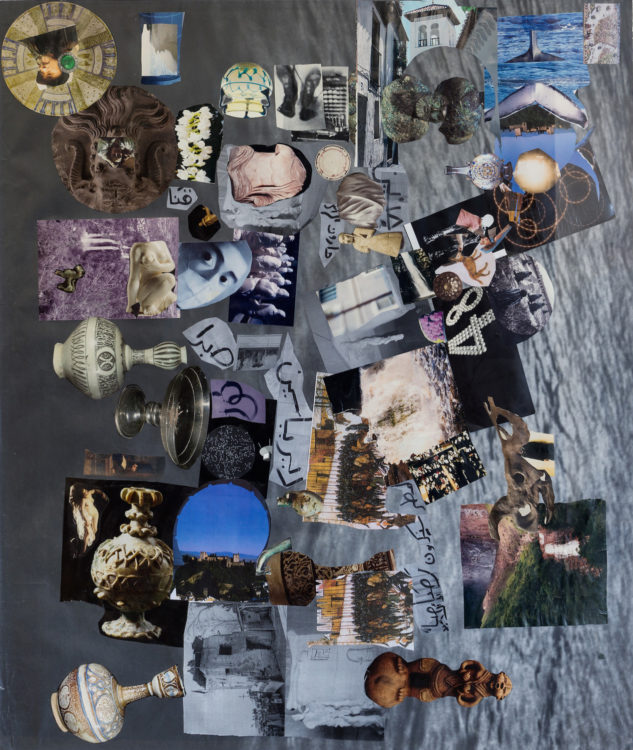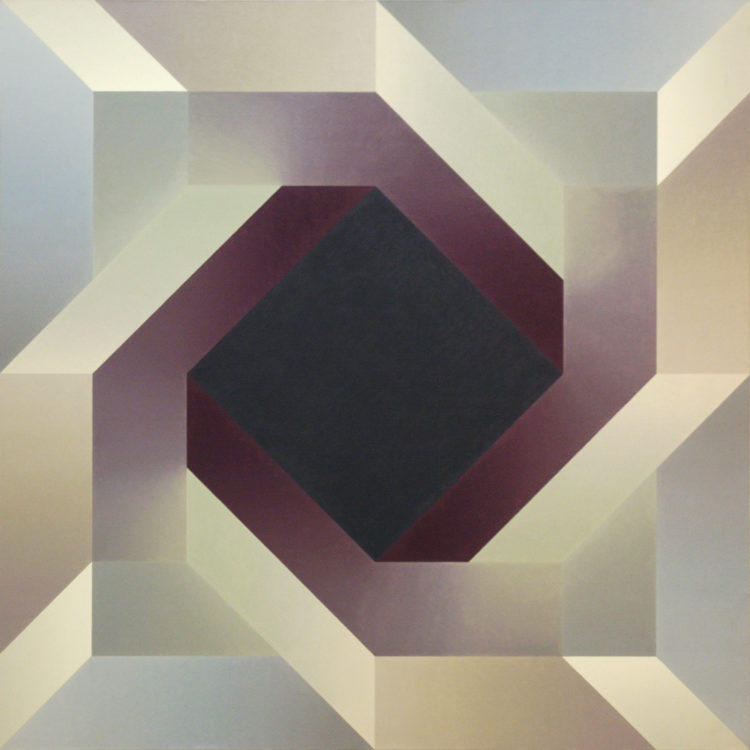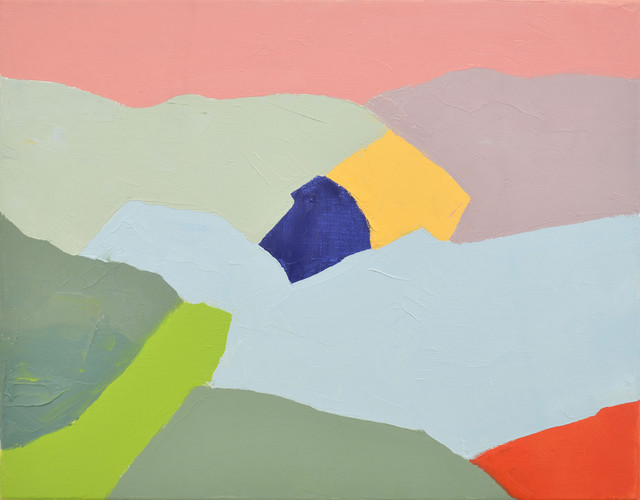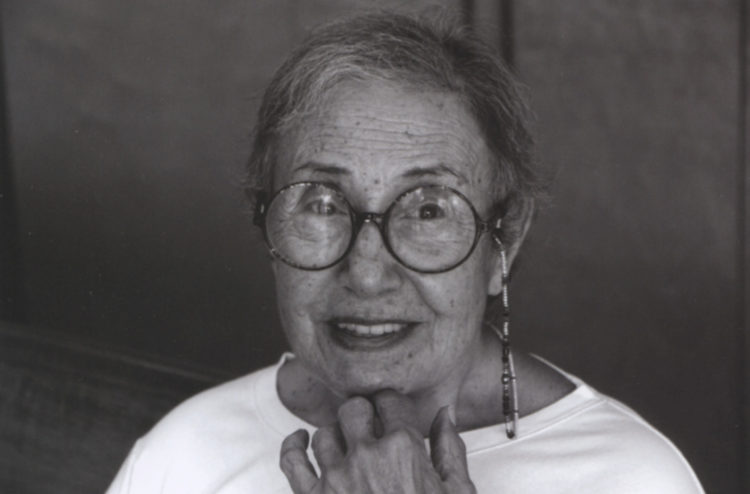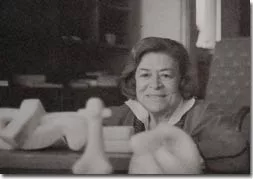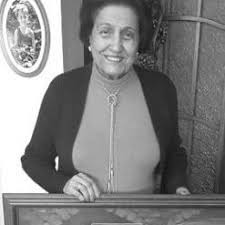Laure Ghorayeb
Bardaouil, Sam; Fellrath, Till, Beirut and the Golden Sixties, Milan, Silvana Editoriale, 2022
→Laure Ghorayeb, Black on White, Beirut, Kaph Books, Saradar Collection series, 2019
→Laure Ghorayeb, Témoignage, Aleph, 1985
Correspondance(s), with Mazen Kerbaj, Sursock Museum, Beirut, 2019
→Laure Ghorayeb : L’ivresse des yeux, galerie Janine Rubeiz, Beirut, 2017
→Home Beirut: Sounding the Neighbors, MAXXI Museum, Rome, 2017
Lebanese painter, poet and critic.
By the end of her life, Laure Ghorayeb had been making art for 83 years. She began drawing in 1940 while at school at the Sœurs Saint-Joseph de l’Apparition in Deir al-Qamar (a town located in Mount Lebanon about 40 kilometres from Beirut). Having grown accustomed to the lack of colour in her textbooks’ illustrations, and with no means to purchase coloured pencils, she always drew in black and white. Her early fidelity to monochrome laid the foundations for her practice and came to be the hallmark of her work. She produced her first serious artworks – charcoal drawings and oil paintings – in 1955, during a stint as a researcher at the Ministry of National Education and Fine Arts. She had been encouraged to pursue art by artist Said Akl (1926-2001), her colleague at the ministry and an early proponent of Hurufiyya (Arabic Lettrism), who influenced the use of Arabic text in her work. A self-trained artist, she came to painting and drawing through her poetry practice. She wrote her first French poems in 1945 after moving to Beirut with her family, and later, in 1960, secured a travel grant from the French embassy in Lebanon to spend six months in Paris as recognition for publishing her first book of poems. Professionally, she translated Arabic poetry into French and was also a committed critic.
While drawing and poetry first ran as two parallel lines in her practice, they came to intermingle in her publications and exhibitions. This is especially apparent in the miniature drawings that appeared in her poetry book, Black… the Blues (1960) and her self-published book of short stories, A Crown of Thorns Around His Feet (1965). In the 1970s she began adding Arabic text to her Civil War Drawings, 86 of which were collected in her book, Témoignage (1985). Some of these drawings were then reworked in 2006 for 33 Days, a series she produced during the 2006 Lebanon war. L. Ghorayeb retained a lifelong commitment to Arabic criticism, but gradually stopped pursuing poetry as an independent activity when she began incorporating text into her drawings. With her freeform style centred on the line, she also often produced the posters for her own exhibitions (notably of her first exhibition Noir et blanc in 1966 at Gallery One), which double as calligrams – artworks in their own right.
L. Ghorayeb was a central participant in Beirut’s vibrant art scene in the long and tumultuous 1960s, covering visual art, literature, and theatre in her criticism. She joined the weekly majlis (gathering of poets and writers hosted by Yusuf al-Khal, one of the founders of the little magazine Shiʿr), for the entire decade. It was through her connection to him that she held her first exhibition, as he co-founded Gallery One with his wife, the artist and writer Helen al-Khal (1923-2009). L. Ghorayeb’s interest in art and language blurred the divide between her private and public lives. In 1966 she married Antoine Kerbage, a theatre and television actor known for his defence of colloquial, spoken, Arabic (al-Amiyya) in the performing arts. They had three children together, one of whom – Mazen Kerbaj (b. 1975) – became an artist.
From the early years of her practice, L. Ghorayeb was an artist of local renown. In 1967 she was awarded a prize at the Paris Biennale for her drawing, The Couple, which disappeared during the Lebanese Civil War. She also participated in the Baghdad and Alexandria biennials, winning the first prize at the latter in 1997. She held solo exhibitions at prominent galleries in Beirut, including Gallery One (1966, 1971); Contact Art Gallery (1974); Gab Center (1985); 50 × 70 Gallery (1994); Station des Arts (1995, 1996); and Galerie Janine Rubeiz (2001, 2015). More recently, the result of her ongoing collaboration with M. Kerbaj was included in several shows, including From One Window, the Other (2007); You, Me and the Wallpaper (2010); and L’Abécédaire (2015) at Galerie Janine Rubeiz and Correspondance(s) (2019) at the Sursock Museum. Her work is held in the collections of the Barjeel Art Foundation, the British Museum, the Dalloul Art Foundation, the Saradar Collection and the Sursock Museum. A monograph of her work was published by Kaph Books in 2019.




